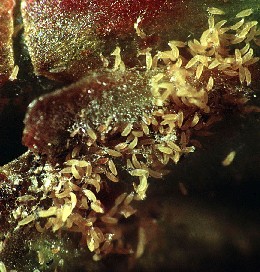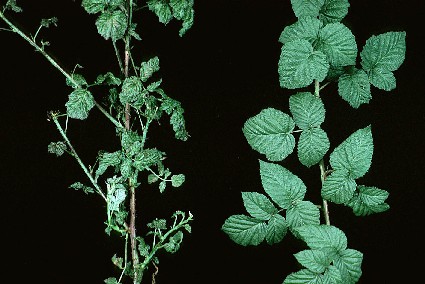
Raspberry leaf and bud mite (Phyllocoptes gracilis) is a sporadic pest of raspberry in many parts of northern and central Europe. Wild raspberries growing in woodlands are heavily infested. These mites are readily dispersed and are found in low numbers in many plantations and nursery stocks.

The characteristic feeding damage is distorted leaves with chlorotic blotches most obvious when raspberries are grown in sheltered conditions. This damage is frequently confused with that caused by virus infection. At present there is no approved chemical control product.
